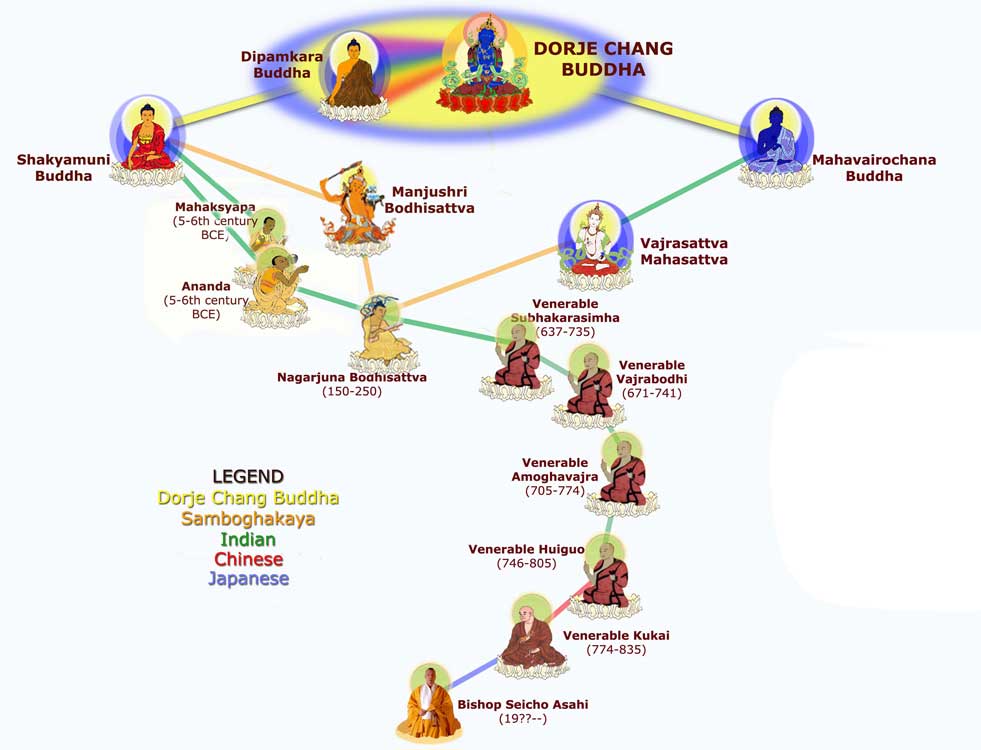 A form of esoteric or vajrayana Buddhism transmitted to China in the 8th century having as its primary deity, the Sun Buddha, Mahavairochana. Venerable Subhakarasimha (637-735), considered the first patriarch of this lineage in China, was followed by Venerable Vajrabodhi (671-741) and his disciple Venerable Amoghavajra (705-774) who transmitted the secret teachings to Venerable Huiguo or Hui-kuo (746-805) who, in turn, passed them to the Venerable Kukai (774-835) who took them back to Japan. Vajrabodhi received the vajrayana lineage through Nagabodhi, a disciple of Master Nagarjuna.
A form of esoteric or vajrayana Buddhism transmitted to China in the 8th century having as its primary deity, the Sun Buddha, Mahavairochana. Venerable Subhakarasimha (637-735), considered the first patriarch of this lineage in China, was followed by Venerable Vajrabodhi (671-741) and his disciple Venerable Amoghavajra (705-774) who transmitted the secret teachings to Venerable Huiguo or Hui-kuo (746-805) who, in turn, passed them to the Venerable Kukai (774-835) who took them back to Japan. Vajrabodhi received the vajrayana lineage through Nagabodhi, a disciple of Master Nagarjuna.
This form of practice is seen as a short cut to the usual gradual cultivation of wisdom on one’s own in favor of powerful practices empowered by beings who are more advanced on the path who lead the practitioner directly to the goal of enlightenment and liberation in a few lifetimes whereas the exoteric practices can take eons to reach perfection. The powers of this practice can also be used for achieving longevity, healing, the acquisition of wealth, removing obstacles, and other purposes as may be needed to liberate and help living beings. It was only officially recognized as an independent school for around a century in China during which time it was exported to Japan to become the Shingon School which is still active in Japan. It has also migrated to the West in both its Japanese and Chinese forms. Bishop Seicho Asahi served as head of the American Division of Shingon.
